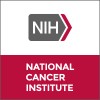
Study to Assess Change in Disease Activity and Adverse Events of Oral Venetoclax in Combination...
Chronic Lymphocytic Leukemia (CLL)Small Lymphocytic Lymphoma (SLL)Chronic lymphocytic leukemia (CLL) is the most common leukemia in Western countries, representing approximately 30% of all adult leukemias. There is a large difference in proportion of malignant lymphoma between the United States (US) and Japan was seen in CLL/small lymphocytic lymphoma (SLL) (Japan, 3.2%; US, 24.1%). The purpose of this study is to assess how well venetoclax works in combination with obinutuzumab (V+G, Cohort 1) or with ibrutinib (V+I, Cohort 2) in Japanese participants with previously untreated CLL/Small Lymphocytic Lymphoma (SLL). Adverse events and change in disease activity will be assessed. Venetoclax is an approved drug for the treatment of CLL and SLL. Study doctors put the participants in 1 of 2 groups, called treatment arms, based on variable alternating assignment. Approximately 20 adult participants with previously untreated CLL/SLL will be enrolled in the study in approximately 20 sites in Japan. Participants in group 1 will receive oral venetoclax + intravenous (IV) obinutuzumab (V+G) in 28-day cycles for a total of 12 cycles, and participants in group 2 will receive oral venetoclax + oral ibrutinib (V+I) in 28-day cycles for a total of 15 cycles. There may be higher treatment burden for participants in this trial compared to their standard of care. Participants will attend regular visits during the study at a hospital or clinic. The effect of the treatment will be checked by medical assessments, blood tests, and checking for side effects.

Itacitinib, Tacrolimus, and Sirolimus for the Prevention of GVHD in Patients With Acute Leukemia,...
Acute LeukemiaHematologic and Lymphocytic Disorder3 moreThis phase IIa trial studies the side effects of itacitinib when given together with standard treatment (tacrolimus and sirolimus), and to see how well it works in preventing graft-versus-host-disease (GVHD) in patients with acute leukemia, myelodysplastic syndrome or myelofibrosis who are undergoing reduced intensity conditioning donor stem cell transplantation. GVHD is a common complication after donor stem cell transplantation, resulting from donor immune cells recognizing recipients' cells and attacking them. Adding itacitinib to tacrolimus and sirolimus may reduce the risk GVHD and ultimately improve overall outcome and survival after donor stem cell transplantation.

Ipilimumab and Decitabine in Treating Patients With Relapsed or Refractory Myelodysplastic Syndrome...
Previously Treated Myelodysplastic SyndromeRecurrent Acute Myeloid Leukemia7 moreThis phase I trial studies the side effects and best dose of ipilimumab when given together with decitabine in treating patients with myelodysplastic syndrome or acute myeloid leukemia that has returned after a period of improvement (relapsed) or does not respond to treatment (refractory). Immunotherapy with monoclonal antibodies, such as ipilimumab, may help the body's immune system attack the cancer, and may interfere with the ability of tumor cells to grow and spread. Drugs used in chemotherapy, such as decitabine, work in different ways to stop the growth of cancer cells, either by killing the cells, by stopping them from dividing, or by stopping them from spreading. Giving ipilimumab and decitabine may work better in treating patients with relapsed or refractory myelodysplastic syndrome or acute myeloid leukemia.

2nd or 3rd TKI-stop After 2 Years Nilotinib Pre-treatment in CML-patients
Chronic Myeloid LeukemiaThe main goal of the study is the assessment of duration of major molecular response (MMR) or better at 12 and 36 months after stopping tyrosine kinase inhibitors (TKI) therapy a second or third time in patients with at least three years prior TKI treatment comprising at least two years of nilotinib treatment within this trial and maintained stable MR4 (BCR-ABL ratio <0,01% on international Scale (IS) for at least one year and MR4.5 (BCR-ABL ratio <0,0032% on IS) for at least 6 months: who failed a first stop in the EURO-SKI study (standardized criteria) who failed a first or second stop outside the EURO-SKI study but would have had fulfilled same eligible criteria and were stopped according to EURO-SKI rules who failed a first or second stop outside the EURO-SKI study without fulfilling EURO-SKI rules

Ibrutinib Plus Venetoclax in Subjects With Treatment-naive Chronic Lymphocytic Leukemia /Small Lymphocytic...
LeukemiaChronic Lymphocytic Leukemia1 moreThis is a multicenter, 2-cohort Phase 2 study assessing both minimal residual disease (MRD)-guided discontinuation and fixed duration therapy with the combination of ibrutinib + venetoclax in subjects with treatment-naïve CLL or SLL.

Combination Chemotherapy in Treating Young Patients With Newly Diagnosed High-Risk B Acute Lymphoblastic...
B Acute Lymphoblastic LeukemiaB Acute Lymphoblastic Leukemia3 moreThis randomized phase III trial studies how well combination chemotherapy works in treating young patients with newly diagnosed B acute lymphoblastic leukemia that is likely to come back or spread, and in patients with Philadelphia chromosome (Ph)-like tyrosine kinase inhibitor (TKI) sensitive mutations. Chemotherapy drugs, work in different ways to stop the growth of cancer cells, either by killing the cells, by stopping them from dividing, or by stopping them from spreading. Giving more than one drug (combination chemotherapy) and giving the drugs in different doses and in different combinations may kill more cancer cells.

A Study of Venetoclax in Combination With Low Dose Cytarabine Versus Low Dose Cytarabine Alone in...
Acute Myeloid Leukemia (AML)The primary objective of this study is to evaluate if venetoclax when co administered with low-dose cytarabine (LDAC) improves overall survival (OS) versus LDAC and placebo, in treatment-naïve patients with acute myeloid leukemia (AML).

Blinatumomab and Pembrolizumab for Adults With Relapsed/Refractory B-cell Acute Lymphoblastic Leukemia...
B-Cell Acute Lymphoblastic LeukemiaAdultThis is a Phase I/II study of blinatumomab in combination with pembrolizumab in adult patients with relapsed or refractory B-lineage ALL (B-ALL). The primary objective of this study is to determine if the addition of pembrolizumab to blinatumomab improves the Complete Response Rate (CR) and Complete Remission with Partial Hematologic Recovery (CRh) relative to blinatumomab alone in adult subjects with relapsed or refractory B-cell acute lymphoblastic leukemia with high bone marrow lymphoblast percentage (>50% lymphoblasts).

A Study of Blinatumomab in Patients With Pre B-cell ALL and B-cell NHL as Post-allo-HSCT Remission...
Acute Lymphoblastic LeukemiaB-cell Non Hodgkin Lymphoma1 moreThe investigators primary objective is to determine the safety and toxicity of incorporating blinatumomab into the post-allogeneic hematopoietic stem cell transplant (HSCT) maintenance setting for patients with CD19+-B-cell malignancies (Acute Lymphoblastic Leukemia [ALL], Non-Hodgkin's Lymphoma [NHL]).

Reduced Intensity Chemotherapy and Radiation Therapy Before Donor Stem Cell Transplant in Treating...
Acute Myeloid LeukemiaAcute Myeloid Leukemia in Remission13 moreThis clinical trial studies the use of reduced intensity chemotherapy and radiation therapy before donor stem cell transplant in treating patients with hematologic malignancies. Giving low doses of chemotherapy, such as cyclophosphamide and fludarabine phosphate, before a donor stem cell transplant may help stop the growth of cancer cells. It may also stop the patient's immune system from rejecting the donor's stem cells. The donated stem cells may replace the patient's immune cells and help destroy any remaining cancer cells (graft-versus-tumor effect). Reducing the intensity of the chemotherapy and radiation may also reduce the side effects of the donor stem cell transplant.
